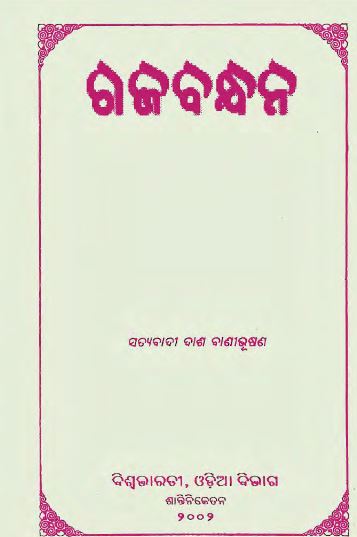Gajabandhan is a distinguished work in Odia literature, composed by S.D. Banibhusana and meticulously edited by N. Harichandan and A.K. Rath. Published in 2002, this book offers readers a unique insight into the age-old tradition of elephant capture—a practice steeped in cultural symbolism and historical importance. Derived from a sub-manuscript collected in Tigiria, the poem “Gajabandhan” (literally meaning “the tying up of an elephant”) stands as a lyrical testament to the intricate relationship between man and nature, encapsulating the ritual’s beauty, peril, and deeper significance.
At its core, the poem goes beyond the mere depiction of a physical act. Banibhusana weaves a narrative that captures the essence of the ritual, illustrating not only the technical intricacies involved in the capture of these majestic creatures but also the underlying emotions that fueled the process. The text narrates the elaborate planning, the coordinated efforts, and the valor of those engaged in the ritual. It is a vivid account that blends human endeavor with nature’s grandeur, forming a metaphor for the way communities historically negotiated their relationship with the natural world.
The origin of the manuscript in Tigiria lends the work an air of authenticity and regional richness. This sub-manuscript, preserved within a local cultural milieu, reflects the traditional artistic expressions of the area and the oral narratives that have been handed down through generations. In the verses of Gajabandhan, the reader finds not only historical details but also a deep emotional connection that underscores the reverence for the elephant—a symbol of strength, wisdom, and untamable nature in many indigenous belief systems.
Edited by N. Harichandan and A.K. Rath, the text has been carefully prepared for a modern audience without sacrificing its authentic voice or historical texture. Their editorial contribution is evident in the balanced presentation of the poem, which preserves the original cadence and lyrical expressions while situating the work within a broader literary context. They have managed to retain the traditional flavor of the narrative, ensuring that every image and metaphor resonates with both cultural significance and poetic beauty.
The poem serves as an important literary window into a time when the capture of an elephant was not merely an act of physical conquest, but a multi-layered event loaded with ritualistic symbolism and communal participation. It signifies a moment of transformation—for both the animal and the human participants—where danger, respect, and the celebration of nature’s magnificence merge. The detailed depictions in the poem evoke a sense of awe and remind modern readers of the profound, albeit complex, bonds that once unified society with its natural surroundings.
Gajabandhan remains a valuable addition to Odia literary heritage. Through its intricate narrative, the poem challenges readers to reflect on the relationship between tradition and modernity. It invites appreciation for a cultural practice long past but still reverberating with meaning—a reminder that every ritual, however archaic, carries with it stories of human endurance, connection, and reverence for nature. This work endures not only as a historical document but also as a vibrant piece of lyricism that continues to inspire and educate those who seek to understand the deep-rooted cultural narratives of Odisha.
Books Info
| Books name | Gajabandhan |
| Author | SD Banibhusana; N Harichandan, AK Rath, Ed. |
| No Of pages | 73 |
| Publisher | Bishwa Bharati Odia Bibhaga |
| Publication | 2002 |
| Printed At | NA |
| Distributor | NA |

